For the following exercises (1-6), use the horizontal line test to determine whether each of the given graphs is one-to-one.
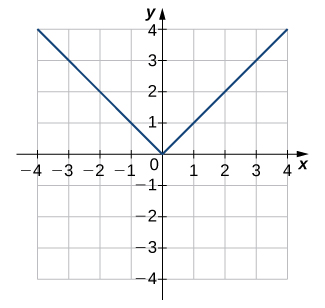

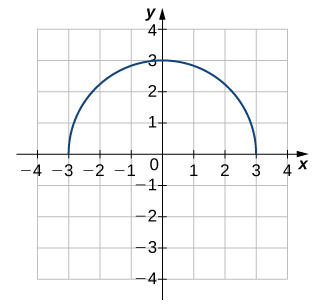
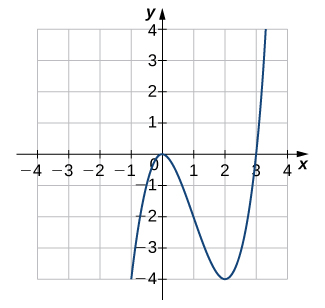

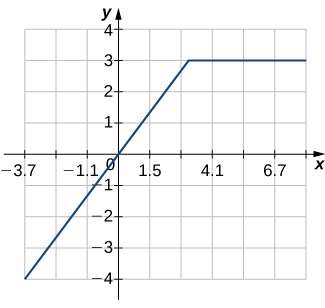
For the following exercises (7-12), (a) find the inverse function, and (b) find the domain and range of the inverse function.
7. [latex]f(x)=x^2-4, \, x \ge 0[/latex]
8. [latex]f(x)=\sqrt[3]{x-4}[/latex]
9. [latex]f(x)=x^3+1[/latex]
10. [latex]f(x)=(x-1)^2, \, x \le 1[/latex]
11. [latex]f(x)=\sqrt{x-1}[/latex]
12. [latex]f(x)=\dfrac{1}{x+2}[/latex]
For the following exercises (13-16), use the graph of [latex]f[/latex] to sketch the graph of its inverse function.
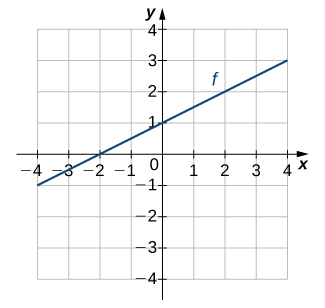
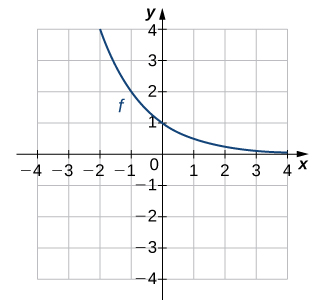
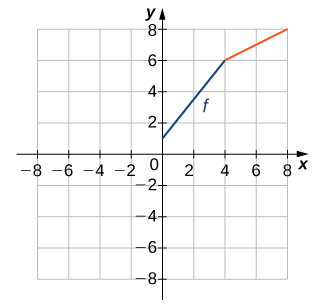
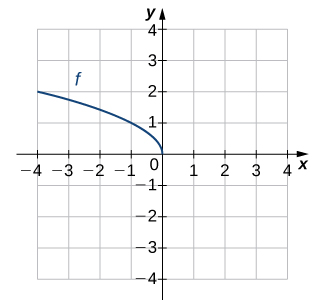
For the following exercises (17-24), use composition to determine which pairs of functions are inverses.
17. [latex]f(x)=8x, \,\,\, g(x)=\dfrac{x}{8}[/latex]
18. [latex]f(x)=8x+3,\,\,\, g(x)=\dfrac{x-3}{8}[/latex]
19. [latex]f(x)=5x-7,\,\,\, g(x)=\dfrac{x+5}{7}[/latex]
20. [latex]f(x)=\dfrac{2}{3}x+2,\,\,\, g(x)=\frac{3}{2}x+3[/latex]
21. [latex]f(x)=\dfrac{1}{x-1}, \, x \ne 1,\,\,\, g(x)=\dfrac{1}{x}+1, \, x \ne 0[/latex]
22. [latex]f(x)=x^3+1,\,\,\, g(x)=(x-1)^{1/3}[/latex]
23. [latex]f(x)=x^2+2x+1, \, x \ge -1,\,\,\, g(x)=-1+\sqrt{x}, \, x \ge 0[/latex]
24. [latex]f(x)=\sqrt{4-x^2}, \, 0 \le x \le 2,\,\,\, g(x)=\sqrt{4-x^2}, \, 0 \le x \le 2[/latex]
For the following exercises (25-33), evaluate the functions. Give the exact value.
25. [latex]\tan^{-1}\left(\frac{\sqrt{3}}{3}\right)[/latex]
26. [latex]\cos^{-1}\left(-\frac{\sqrt{2}}{2}\right)[/latex]
27. [latex]\cot^{-1}(1)[/latex]
28. [latex]\sin^{-1}(-1)[/latex]
29. [latex]\cos^{-1}\left(\frac{\sqrt{3}}{2}\right)[/latex]
30. [latex]\cos (\tan^{-1}(\sqrt{3}))[/latex]
31. [latex]\sin (\cos^{-1}\left(\frac{\sqrt{2}}{2})\right)[/latex]
32. [latex]\sin^{-1}\left( \sin \left(\frac{\pi}{3}\right)\right)[/latex]
33. [latex]\tan^{-1}\left( \tan \left(-\frac{\pi}{6}\right)\right)[/latex]
34. The function [latex]C=T(F)=\left(\frac{5}{9}\right)(F-32)[/latex] converts degrees Fahrenheit to degrees Celsius.
- Find the inverse function [latex]F=T^{-1}(C)[/latex]
- What is the inverse function used for?
35. [T] The velocity [latex]V[/latex] (in centimeters per second) of blood in an artery at a distance [latex]x[/latex] cm from the center of the artery can be modeled by the function [latex]V=f(x)=500(0.04-x^2)[/latex] for [latex]0 \le x \le 0.2[/latex].
- Find [latex]x=f^{-1}(V)[/latex].
- Interpret what the inverse function is used for.
- Find the distance from the center of an artery with a velocity of 15 cm/sec, 10 cm/sec, and 5 cm/sec.
36. A function that converts dress sizes in the United States to those in Europe is given by [latex]D(x)=2x+24[/latex].
- Find the European dress sizes that correspond to sizes 6, 8, 10, and 12 in the United States.
- Find the function that converts European dress sizes to U.S. dress sizes.
- Use part (b) to find the dress sizes in the United States that correspond to 46, 52, 62, and 70.
37. [T] The cost to remove a toxin from a lake is modeled by the function
[latex]C(p)=\dfrac{75p}{(85-p)}[/latex],
where [latex]C[/latex] is the cost (in thousands of dollars) and [latex]p[/latex] is the amount of toxin in a small lake (measured in parts per billion [ppb]). This model is valid only when the amount of toxin is less than 85 ppb.
- Find the cost to remove 25 ppb, 40 ppb, and 50 ppb of the toxin from the lake.
- Find the inverse function.
- Use part (b) to determine how much of the toxin is removed for $50,000.
38. [T] A race car is accelerating at a velocity given by
[latex]v(t)=\frac{25}{4}t+54[/latex],
where [latex]v[/latex] is the velocity (in feet per second) at time [latex]t[/latex].
- Find the velocity of the car at 10 sec.
- Find the inverse function.
- Use part (b) to determine how long it takes for the car to reach a speed of 150 ft/sec.
39. [T] An airplane’s Mach number [latex]M[/latex] is the ratio of its speed to the speed of sound. When a plane is flying at a constant altitude, then its Mach angle is given by [latex]\mu =2\sin^{-1}\left(\frac{1}{M}\right)[/latex].
Find the Mach angle (to the nearest degree) for the following Mach numbers.

- [latex]M =1.4[/latex]
- [latex]M =2.8[/latex]
- [latex]M =4.3[/latex]
40. [T] Using [latex]\mu =2\sin^{-1}\left(\frac{1}{M}\right)[/latex], find the Mach number [latex]M[/latex] for the following angles.
- [latex]\mu =\dfrac{\pi}{6}[/latex]
- [latex]\mu =\dfrac{2\pi}{7}[/latex]
- [latex]\mu =\dfrac{3\pi}{8}[/latex]
41. [T] The temperature (in degrees Celsius) of a city in the northern United States can be modeled by the function
[latex]T(x)=5+18 \sin\left[\frac{\pi}{6}(x-4.6)\right][/latex],
where [latex]x[/latex] is time in months and [latex]x=1.00[/latex] corresponds to January 1. Determine the month and day when the temperature is [latex]21^{\circ}[/latex] C.
42. [T] The depth (in feet) of water at a dock changes with the rise and fall of tides. It is modeled by the function
[latex]D(t)=5 \sin \left(\frac{\pi}{6}t-\frac{7\pi}{6}\right)+8[/latex],
where [latex]t[/latex] is the number of hours after midnight. Determine the first time after midnight when the depth is 11.75 ft.
43. [T] An object moving in simple harmonic motion is modeled by the function
[latex]s(t)=-6 \cos \left(\frac{\pi t}{2}\right)[/latex],
where [latex]s[/latex] is measured in inches and [latex]t[/latex] is measured in seconds. Determine the first time when the distance moved is 4.5 in.
44. [T] A local art gallery has a portrait 3 ft in height that is hung 2.5 ft above the eye level of an average person. The viewing angle [latex]\theta[/latex] can be modeled by the function
[latex]\theta =\tan^{-1}\left(\dfrac{5.5}{x}\right)-\tan^{-1}\left(\dfrac{2.5}{x}\right)[/latex],
where [latex]x[/latex] is the distance (in feet) from the portrait. Find the viewing angle when a person is 4 ft from the portrait.
45. [T] Use a calculator to evaluate [latex]\tan^{-1}( \tan (2.1))[/latex] and [latex]\cos^{-1}( \cos (2.1))[/latex]. Explain the results of each.
46. [T] Use a calculator to evaluate [latex]\sin (\sin^{-1}(-2))[/latex] and [latex]\tan (\tan^{-1}(-2))[/latex]. Explain the results of each.
Candela Citations
- Calculus Volume 1. Authored by: Gilbert Strang, Edwin (Jed) Herman. Provided by: OpenStax. Located at: https://openstax.org/details/books/calculus-volume-1. License: CC BY-NC-SA: Attribution-NonCommercial-ShareAlike. License Terms: Access for free at https://openstax.org/books/calculus-volume-1/pages/1-introduction


